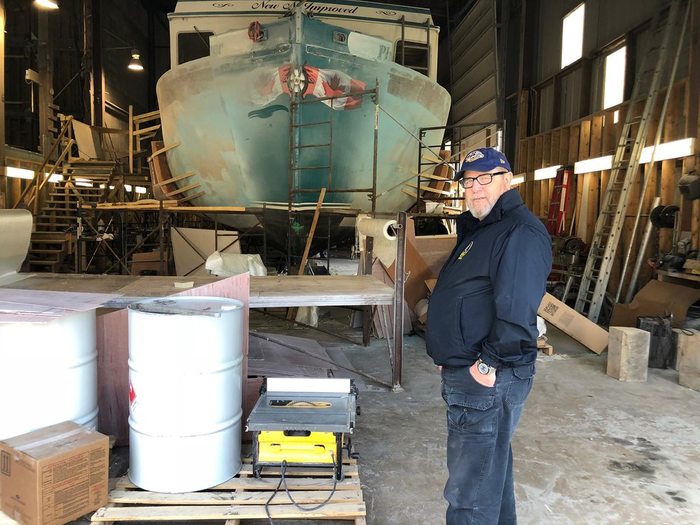Fishing is a proud, vibrant industry at the very core of our heritage. It’s woven into the fabric of our province and for the communities and families whose livelihood depend on it – fishing is a way of life.
For the past 10 years, Vern Shea, Vessel Inspector with the Department of Agriculture has visited docks and piers from the picturesque shoreline in Cape Breton to the heart of the world’s largest lobster fishing grounds in Yarmouth.
A seasoned and respected member of the fishing and boat building industries, Vern began his career 44 years ago.
“In the 70’s boat building really took-off,” says Vern. “I began my apprenticeship program in 1974 preparing blueprints in the drawing office of the Pictou Ship Yard.”

Since then, he’s worked in Dubai as a shore engineer assisting in the conversion and refit of two offshore support vessels, completed the engineering, project and construction management for the Ship Hector and prepared working drawings for the Bluenose II, including designing the new rudder.
“All the drawings were drawn by hand on the drawing board for the Bluenose II. I’m one of the last ones around who still does this,” says Vern.
In 2009, he started his career in the public service travelling across the Atlantic Provinces to inspect the construction of new and used fishing vessels.
“On a new build, I inspect the construction every few weeks to ensure it’s being built to regulatory and Loan Board standards. It’s important to visit every couple of weeks so issues or problems can be resolved quickly,” says Vern. “As the build progresses I connect with the Loan Board to let them know they can release the next progress payment so construction can continue.”
If a fisher wants to purchase a used boat Vern says he’ll travel to inspect it and make sure the security is in the boat before lending the money.
“If they want $250K for a used boat I need to make sure that the value is there, and the vessel and its equipment are sound, in some instances recommendations are made to bring the vessel up to Loan Board standards,” says Vern. “If they want a loan to do modifications to their current vessel, I need to make sure there is adequate value in the boat to lend the money to do so.”
The provinces loan board operates like a bank, loaning money to fishers to build, purchase or make modifications to existing vessels as a way to support and grow the industry. Vern says the fishers and builders appreciate the face-to-face contact with someone from the department.
“They enjoy having someone who is well-versed in the industry do the inspections,” says Vern. “We’re able to talk about the build, construction or purchase and support them along their journey.”
Currently, there’s roughly 500 vessels in the province’s portfolio. Every year, he visits these vessels when they’re at the wharfs to make sure they have no major defects or structural concerns and then documents either an appreciation or depreciation in its value.
Reeling in Reward
He shares a story of a young man from Southwest Nova Scotia who contacted him looking to purchase a small fishing vessel to make a living for his family.
“He called me up to come inspect the vessel he was looking at purchasing and I could hear some young kids in the background,” says Vern. “I went and inspected it and chatted with my colleagues back at the department and we loaned the young man the money to purchase the vessel. It wasn’t a pearl and I requested that he and his father do some renovations on the vessel.”
When Vern went back to do his inspection he says he didn’t even recognize the boat!
“He did a remarkable job refitting it, he’s now providing for his young family and making a real go at it,” says Vern. “This is what makes me feel good about my job!”
For many fishers, Vern is their first point of contact when wanting to connect with the department or loan board. His friendly and compassionate personality make him a real asset to the clients he serves. He says what motivates him is simple, “it’s ensuring the fishing industry in our province is sustained by those individuals living, fishing and working in those communities.”
Article written by Corey Aalders, Communications Officer
